

As for classes... I'm not sure if I'll do it, since I do think I've exhausted a bit of what I wanted to tell in the appendix segment, which covers a lot of the playable classes as NPCs. If I do, it'll probably be a bit down the line and I'll review every single 5E subclass, otherwise it'll be a bit too descriptive. I don't know. I read through a lot of my reviews of the classes and they don't really feel particularly exciting in terms of being 'monster reviews', and the time I'd be using to research and write them up could've been better used for talking about actual monsters, you know?
Anyway, this was also another segment that I ended up expanding quite a bit upon by virtue of actually acknowledging each Modron variant as a separate entry. I'm not sure why I rushed through them in my original review; I think it was partially because of some still quasi-ingrained 3E/4E bias about more serious-looking redesigns? By which I mean I still love the 3E aesthetic of gritty-but-a-bit-goofy '90's art, but that doesn't mean I really should be mocking the poor Modrons!
Click here for the previous part
Click here for the next part
Click here for the index

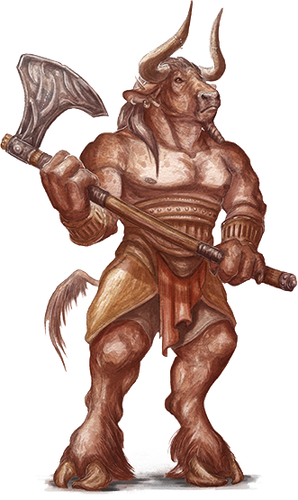
Minotaur

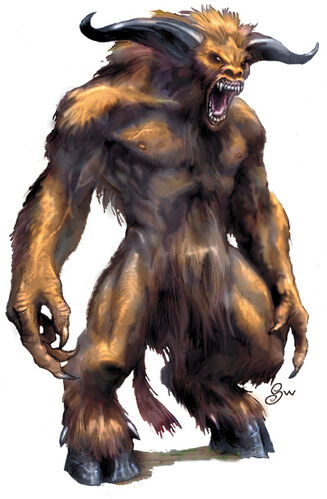

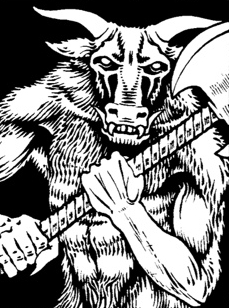
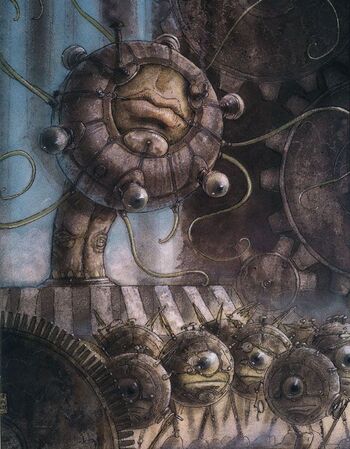
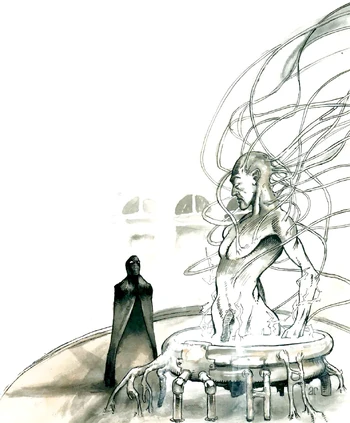
Modrons
____________________________________________________

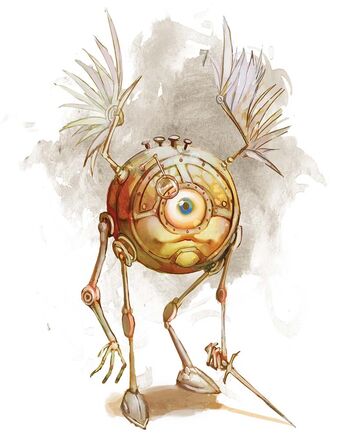

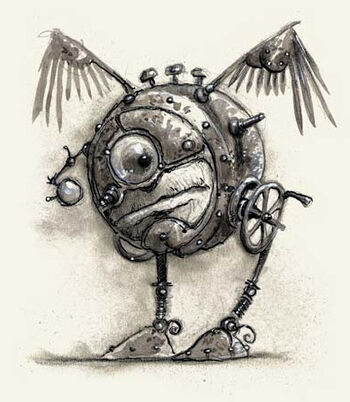
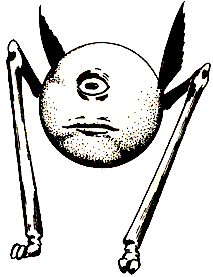

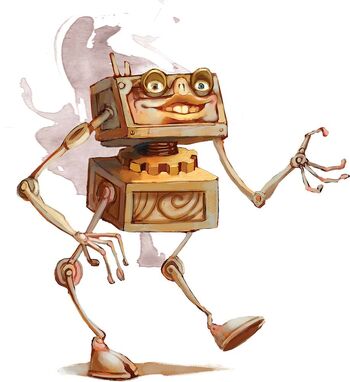
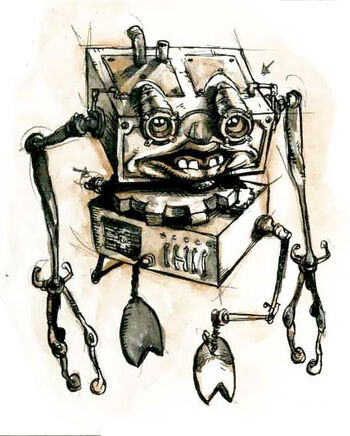
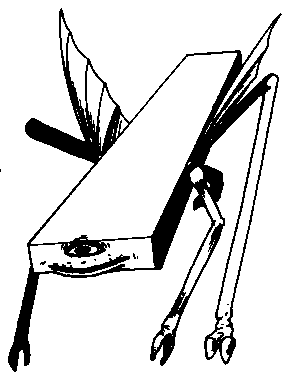

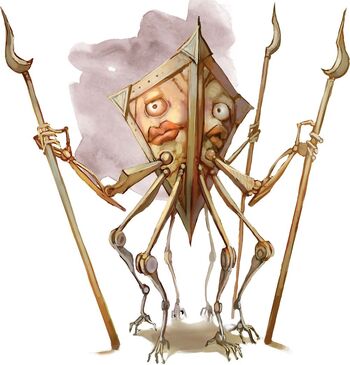
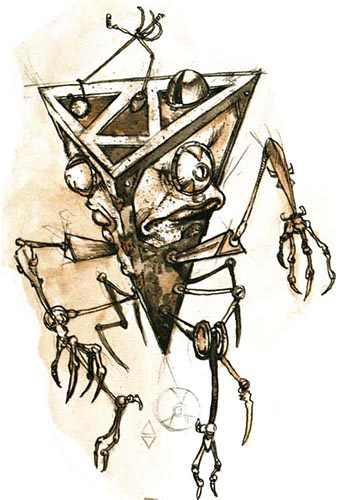
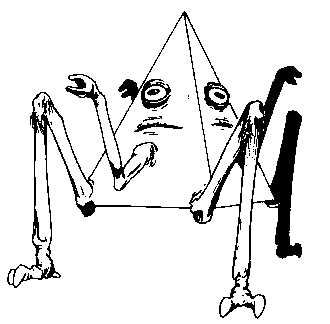

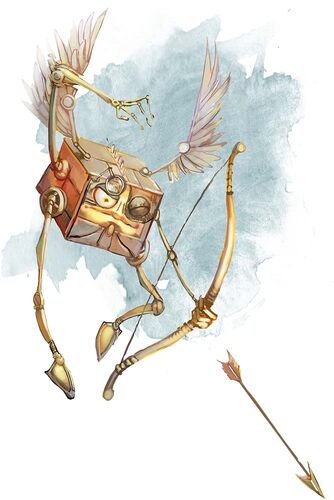

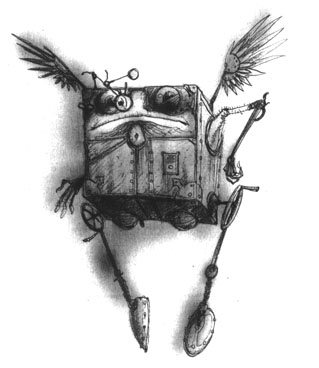
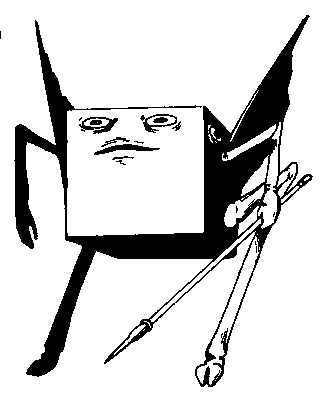

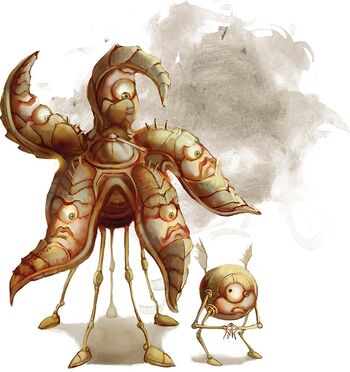
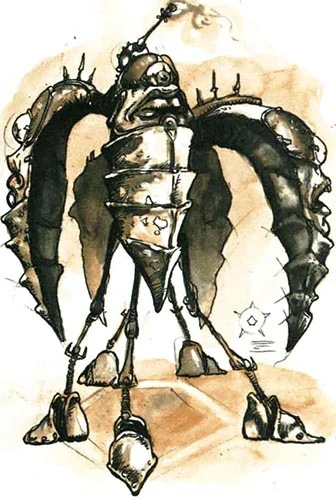


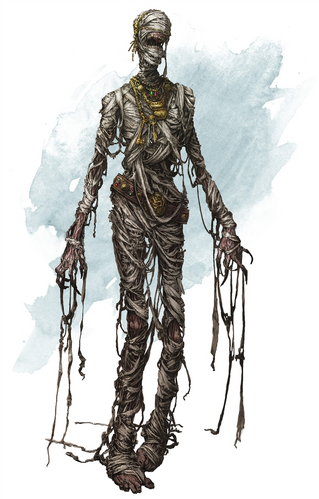 Mummy
Mummy

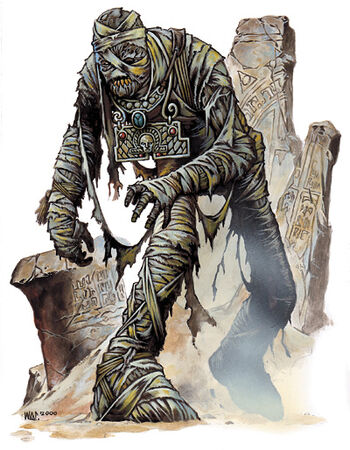

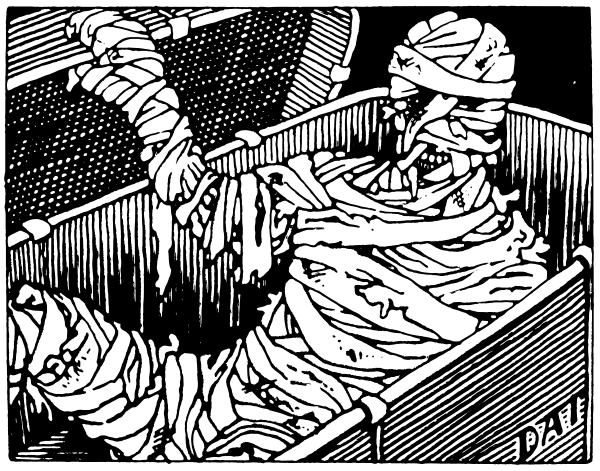
 Mummy Lord
Mummy Lord




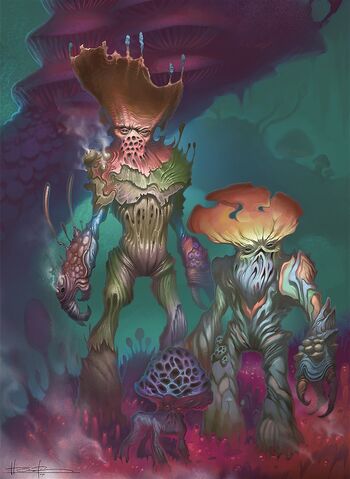

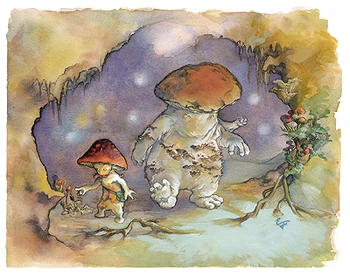
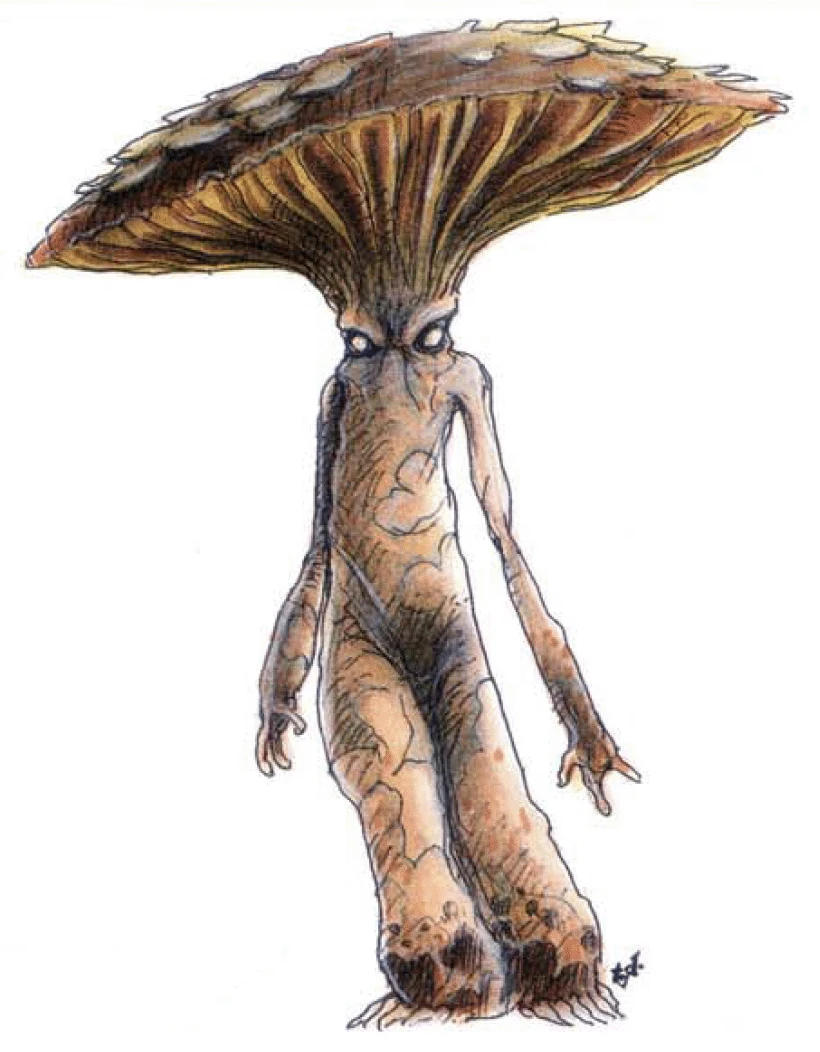
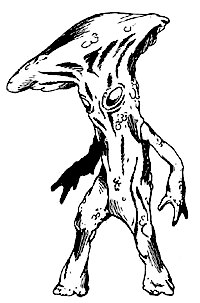



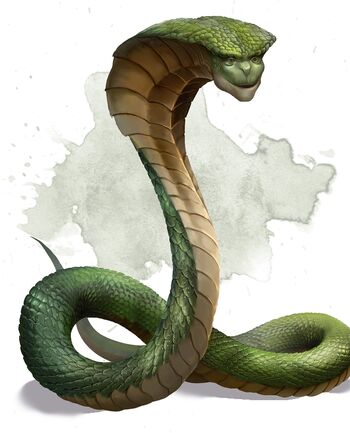
The first 5E Naga we’ll discuss is the Guardian Naga, the most powerful of the three Naga included in the Monster Manual. They have a green serpentine body that ends in a cobra hood and a human face on it. Various editions vary on how human this face looks, and how much it is supposed to contrast the snake body. 5th Edition’s art direction tries to make the head feel a bit more natural, but I think there’s just something striking about some of the older editions’ abrupt ending of a snake body straight to a human head.


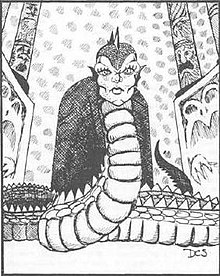

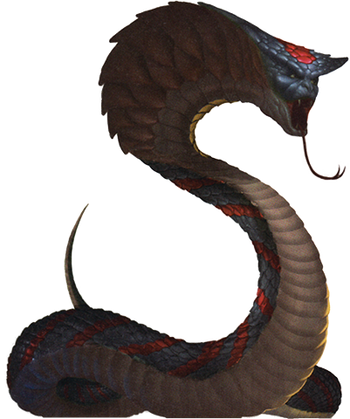


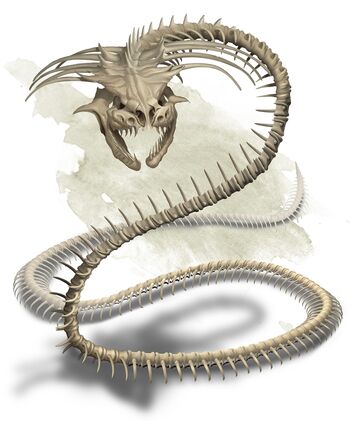


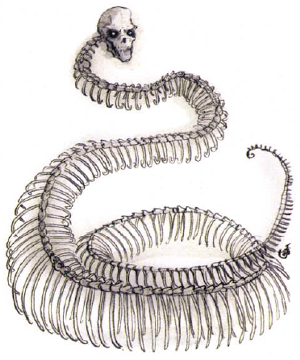

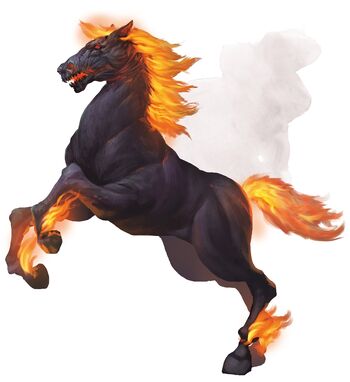
Nightmare
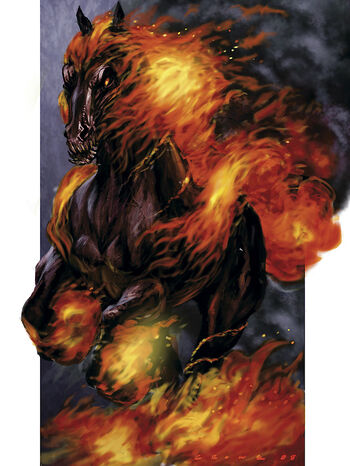


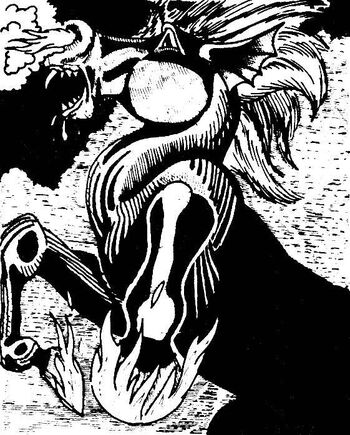

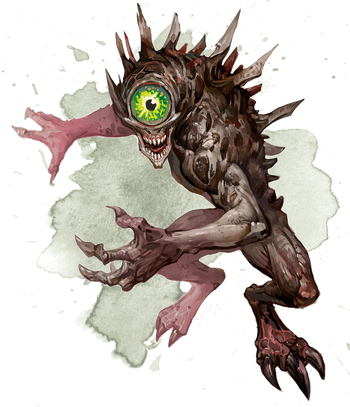
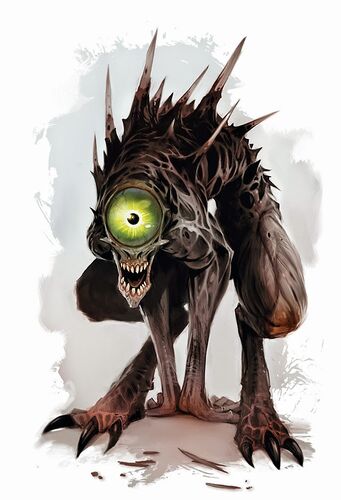
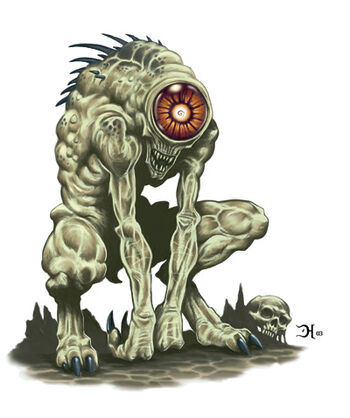
Anyway, this was also another segment that I ended up expanding quite a bit upon by virtue of actually acknowledging each Modron variant as a separate entry. I'm not sure why I rushed through them in my original review; I think it was partially because of some still quasi-ingrained 3E/4E bias about more serious-looking redesigns? By which I mean I still love the 3E aesthetic of gritty-but-a-bit-goofy '90's art, but that doesn't mean I really should be mocking the poor Modrons!
Click here for the previous part
Click here for the next part
Click here for the index
[originally published in December 2019; revised in November 2025]
____________________________________________________


Minotaur
- 5.5E/5E: Large Monstrosity; Chaotic Evil; CR 3
It really is interesting to observe how Minotaurs have transformed in fantasy media over the years. The original mythology of the Minotaur portrayed this massive bull-man as a hideous monster trapped in a labyrinth that consumes and kills anyone that enters. But as mythology is adapted into fantasy, Minotaurs tend to find themselves portrayed as a physically powerful but ultimately intelligent race. Settings like Magic: The Gathering often adapted Minotaurs as a 'proud warrior' race, but the explosive popularity of World of Warcraft and its adaptation of Minotaurs as not only one of the main playable races; but arguably one of the most gentle, has radically shifted Minotaurs in the collective hivemind of the nerds. I believe the relative non-threatening nature of real-world cows have made this connection with Minotaurs a lot easier to swallow.
This is a bit of a problem, because since the beginning, D&D has doubled-down on the monstrousness of the Greek Minotaur. From its earliest editions, Minotaurs were associated as creations of the Demon Lord Baphomet, and were essentially non-demonic, smaller versions of the Goristro demons that were also associated with the same bull-demon-god. Again, the players, meanwhile, have a bit of an appetite to roleplay the gentle-giant Minotaurs they see in other fantasy media. Looking at the evolution of Minotaurs throughout the various editions, you can see when they decided to become a lot less monstrous and just be bull-headed warriors.
This has also bled to the creative team, too, where you see the extremely gentle-looking artwork for the original 5th Edition Minotaur, and then you read the accompanying entry and it begins with "A minotaur's roar is a savage battle cry that most civilized creatures fear. Their brown or black fur is stained with the blood of fallen foes, and they carry the stench of death." I believe that the calm muscular bull-man depicted in the 5E art can most definitely kick my ass, but they just don't really exude that 'man-eating monster' vibe. It's not even a subversion, either, where the Minotaur looks gentle but is actually monstrous... everything in the text describes slavering, monstrous beasts that care about carnage and nothing else.
Which is why I really like that the 5.5E Monster Manual has essentially replaced the Minotaur... with a Minotaur of Baphomet. With other books like Monsters of the Multiverse giving options for the regular Minotaurs as a playable race instead. It's a nice splitting of the differences, allowing the monstrous Grecian Minotaurs to be represented as a giant beast that stalks labyrinths, while the race of gentle-but-powerful cow-people join the ranks of funny animal folk that you can roleplay as. There's even a lore reason for this, noting that the descendants of the original Minotaurs actually find themselves 'free of Baphomet's influence', leading to a clear segregation between the 'monster' and 'playable' Minotaurs.




The 5.5E artwork depicts a truly monstrous Minotaur of Baphomet. Still unmistakably a muscular humanoid with the head of a bull, wielding the iconic axe... but it's much, much larger than the human in the foreground. It's got carnivorous fangs that mark it as a monstrous man-eating monster, and there are some additional bony ridges around its eyes. I love that they went all-in on the concept, and the splitting of the 'monster Minotaur' and 'playable Minotaur' is a good update in my book. These Minotaurs of Baphomet are descendants of the Demon Lord's cultists, whose brand of chaos involves returning back to nature... which sounds druidic until you realize that the Baphomet cultists' rituals involve wanton slaughter and savagery. Those most devout of Baphomet's monstrous worshippers will be transformed into Minotaurs, which in turn has led to a self-sustaining new race in the D&D worlds.
Anyway, these monstrous Minotaurs are relatively simple fighters, relying on brute strength and their immense size to crush enemies with their massive axes or muscles. However, one particularly fun thing that they have that originates back to their mythological inspiration is 'labyrinthine recall', allowing it to perfectly recall pathways in a maze. And these do not need to be simple brick-and-mortar mazes, either. Both Monster Manuals note that Minotaurs can lair in complex sewer systems, a complex labyrinthine swamp or forest, or even a very video-gamey set of mazes connected by magical portals.
____________________________________________________


Modrons
Debuting in the earliest editions are the Modrons, which are born out of an empty space in design. If demons and devils represented the various flavours of evil, and angels represented good, what represented the ‘law’ side of the axis? Thus was born the Modrons, who represented absolute law without caring for morality. They were themed after both numbers and robots, both of which are perfect themes for beings of pure law and order. Back then they weren’t allowed to be ‘too’ sci-fi-y (‘Expedition to Barrier Peaks’ notwithstanding) so the Modrons were themed more around geometry instead of being actual robots… and the resulting artwork was endlessly mocked.
…again, as if the original artwork for Mind Flayers and Dragons were anything like their more badass modern incarnations! But regardless of intent, the Modrons continually join poor beings like the Flumph or the Cloaker in being cast as ‘super stupid monsters in our super-serious game’. Modrons got a fair bit of shine in 2E’s Planescape, receiving a lot of glorious art… and was essentially forgotten in 3E and 4E’s more serious tone.
But in 5th Edition, I was very pleasantly surprised that the Modrons not only made it in, but was even more or less unchanged from the 2E Planescape artwork. More details and colours, but the juxtaposition between being made up of funky clockwork robotic parts and their very, VERY human-looking lips and eyes are still there. Honestly, that feel of ‘uncanny valley’ is really what separates the Modrons from the dozens and dozens of other samey constructs in D&D and fantasy in general.
I’ll talk a bit about the different specific variants of Modrons, and talk about the species as a whole. The Modrons hail from the plane of Mechanus, which is a plane of eternally-revolving gears and machinery. Like clockwork, their existence is complete law and order, led by their leader Primus and following the most rigid of hierarchical and mathematical laws. Each Moderon receives a command from its superior, and delegates orders to their underlings. They have no ego, only efficiency and what is necessary to fulfill their duties. They are a hivemind in all but name – not truly sharing a mind, but having their priorities so utterly devoted to the Modron way. Modrons communicate with only their own ranks, and the ranks above and below them. In past editions, they are even unaware of those beyond a single rank, but in 5E it’s changed to the more reasonable if the ranks are too high, they are too complicated; and if the ranks are too low, they are too simple. Okay!
Again, what makes the Modrons work very well is that they follow an internal logic, and that logic is law and hierarchy to the exclusion of everything else. I feel like this is why they remain beloved in Dungeons and Dragons and not forgotten like so many other monster species. Their interpretation and the themes are apparently memorable enough to make them get their much-deserved spot in the 5th Edition Monster Manual.


Modron: Monodrone
- 5.5E/5E: Medium Construct; Lawful Neutral; CR 1/8
The most basic and weakest version of the Modrons is the ‘Monodrone’, which has actually cropped up a fair bit in 5E’s material as a secondary ‘mascot’ monster, I feel. The design is relatively simple enough – you’ve got a regular round robotic body, very thin arms and legs, a pair of somewhat comically undersized wings… and a very organic eyeball and a skin-like chin and lips. It’s… it’s honestly kind of disturbing the first time I saw the 5E Modrons, but I’ve grown to appreciate the contrast between the fleshy bits and the ‘clockpunk’ mechanical parts.
Again, the whole idea of these Modrons is that they get increasingly complex as they ‘evolve. Monodrones, for example, can only perform a single, simple task at a time – like relaying a single message of 48 words. I feel that it’s probably a programming or computer-science joke. Monodrones view the world in a rather simple worldview – they only believe things that can be proven by logic or mathematics. And if they can’t explain something with either of those? They call their big brothers and sisters, the Duodrones. I particularly like the original 5E art, which gives its Monodrone a cute little monocle hanging off of its fleshy eyeball.



I tend to not to talk as much about the older editions, but the jump from 1E and 2E is very crucial in really selling the flavour of the Modrons as constructs. The original 1E artwork relied more on geometric shapes, but that ended up just causing these guys to look like weird oranges with eyes (and the more complex Modrons as looking like bricks with eyes). The addition of gears and whatnot in the excellent Planescape art does really work in making them feel a lot more distinctly ‘construct-y’.
____________________________________________________


Modron: Duodrone
- 5.5E/5E: Medium Construct; Lawful Neutral; CR 1/4
We get a bit more complex with the Duodrone, which still has the same ‘geometric shapes with spindly arms’ vibe as the Monodrone. Only it is now two boxes stacked on each other, with a very fleshy face growing out of the top box. Again, the 5E artwork in particular gives us a very… weird-looking face. The eyes grow out of metal goggles that are attached to the main metallic part of the Duodrone, while we’ve got a very fleshy nose and mouth smiling on the top box.
The Duodrones can perform TWO tasks at one time, and this is basically a nice little showcase to how the Modrons get more and more complex over time. Duodrones are also noted by 5.5E to be ‘more skeptical of strangers’ than Monodrones. They’re all right; I’ve always kind of forgotten the Duodrones and find them the least interesting of the five Modrons introduced in 5E’s Monster Manual.


Which, I suppose, is a nice place to talk about their stats… and let me say that the stats for the Modrons isn’t particularly interesting. All of them have very basic attacks; with maybe the two strongest ones in the Monster Manual having like a ranged attack or an area attack. The Planescape book would add the higher-tier Modrons, but for a good chunk of 5th Edition’s run the Modrons are just quirky little gear guys.
____________________________________________________


Modron: Tridrone
- 5.5E/5E: Medium Construct; Lawful Neutral; CR 1/2
The Tridrones are probably my favourite of the original five Modrons. True to its name, the Tridrone is based on triangles, and is shaped like an inverted pyramid. Each side has a single eye and a pair of lips, and out of each side of the three-sided pyramid is a hand and two legs. That’s three limbs out of each face! I just got it! It is a bit of a shame that this progression in complexity doesn’t actually continue down the line, but I feel like the Tridrone has this nice combination of weirdness and increased complexity that I just adore.
The Tridrones are specifically noted to be generals that lead lesser Modrons (which, in this case, just Duodrones and Monodrones) into battle. They are noted to be particularly suspicious of non-Modrons, and this suspiciousness presumably is also shared with Modrons that are higher-ranked than the Tridrone. I really like the sternness that the Tridrone has, which is a nice contrast to the two happy-go-luckier vibes of the lesser Modrons.


Again, the Modrons are a massive not-quite-hivemind living in the gear-themed plane of Mechanus. One of the more interesting aspects of Mechanus and the Modrons an event called the “Great Modron March”. Whenever the gears of Mechanus ‘complete seventeen cycles once every 289 years’ (which sounds like another programming/math joke!) Primus sends a massive army of Modrons across the Outer Planes on some strange reconnaissance mission that only they really understand the full scope of. I love the mental image of portals opening and unending hordes of these steampunk robots with smiling fleshy lips just clanking through fields and mountains for some strange reason.
____________________________________________________


Modron: Quadrone
- 5.5E/5E: Medium Construct; Lawful Neutral; CR 1
I get that the ‘Quadrone’ is meant to be a cube, the shape made up of four sides. But the reality is, the Quadrone really feels like it’s a step down in complexity than the Tridrone and even the Duodrone. It really feels like the Quadrone needs some additional faces even if they wanted to go for the ‘cube’ feel. I suppose the idea is that the Monodrone is a ‘dot’, the Duodrone is a ‘line’, and the Tridrone through Pentadrone are all three-dimensional shapes… but it really doesn’t look like that. Maybe if the Quadrone is made up of eight cubes or something, to make it look more complex than the Duodrone? The fact that it has the same regular face doesn’t help either. I guess the idea is that the Quadrones fly, but still, while I like the skeletal metal wings, I still feel like they’re a bit odd in the context of the Modrons’ hierarchy.
The Quadrone’s whole deal is that it’s the artillery and field officer of the Modrons, particularly with its ability to fly, and its ability to do ranged attacks. The original 5E Quadrone (and previous incarnations) all used a fancy bow… but the 5.5E Quadrone has upgraded it to a wrist-mounted cannon that shoots gears. I find this adorable. 5.5E also identifies the Quadrone as the variant of Modron that most often goes rogue… which means I get to talk about rogue Modrons here.



Modron units sometimes becomes ‘defective’, and this could be caused by either natural decay, or exposure to the forces of chaos. These Rogue Modrons break laws and disobey orders, and other Modrons actually go out and hunt down such rogues. With the whole robotic angle, it really does feel like it’s like an antivirus software hunting down and trying to get rid of a malfunctioning code… but what happens if these ‘bugs’ and ‘glitches’ are actually sentient? I feel like it’s a very obvious, if fun, little plot hook. Is the rogue Modron actually vicious and intent on causing harm to others; or is the rogue Modron actually begging for help because it doesn’t want to be destroyed? Or perhaps a Modron hunting unit threatens to destroy everything in its path unless an adventuring party could help deliver the rogue Modron to them. It’s neat.
____________________________________________________


Modron: Pentadrone
- 5.5E/5E: Medium Construct; Lawful Neutral; CR 2
The Modron hierarchy goes up a lot more, but 5th Edition appropriately stops at the fifth version, the Pentadrone. Larger than its lesser variants (with the 5E showing a Monodrone for scale), Pentadrones are starfish-shaped robots. I find the design quite whimsical, with each bulbous starfish arms having plates of metal and a frowning cyclopean face in the middle. They are still fleshy! And holding up the big body are five slender legs that don’t really look like they could support the full weight of the chunky Pentadrone.
The Pentadrone has the ability to unleash a paralytic gas, which the 5.5E artwork displays rather nicely through a trumpet that opens up from the center of the creature. Pentadrons are noted to oversee the worker Modrons, and is the first type of Modron to be able to actually improvise in response to new situations. In 5.5E they are also noted to be quick to call lengthy meetings with other Modrons while making decisions.


The Monster Manual also talks a little bit of Modron reproduction, such as it is. Every single Modron has a trait called ‘disintegration’, where all Modron variants disintegrate into nothing when they die. The nature of the Modrons means that whenever a Modron is destroyed, a replacement from the next lower rank transforms in a flash of light – and this leads to a chain reaction of Modron promotions all the way to the lowest level. And at this point, the missing Monodrone is replaced by a freshly-created Monodrone by their Primus. It’s quite fascinating, really!
While not as iconic as the Flumph, the Modrons have been mercilessly mocked since 2E for being ‘stupid geometry robots’. It really isn’t fair, and there is place in a fantasy setting for torture demons and these more whimsical weirdos. As much as there are a lot of valid reasons to criticize 5E, I feel like they do try a good job, at least in the core package, to have a nice balance of all aspects of the franchise’s history.
____________________________________________________


- 5.5E/5E: Medium Undead; Lawful Evil; CR 3
So, mummies! I actually find Mummies a bit underrated as undead, even though they definitely are as classical as pop culture monsters as like, zombies and vampires. I think it’s partially the fact that they don’t exactly fit into the ‘gothic’ vibe that a lot of the classic horror monsters do, and most of the time Mummies end up being tied to Egyptian-themed settings. Or, as the 5.5E artworks show, Incan/Aztec-themed settings. That’s not exactly fair, though, because before D&D propped up ‘Lich’ as the term for the super-sentient undead, a lot of the tropes arguably also apply to the Mummy. I guess the 'bandaged corpse' look always tends to look somewhat comical to the modern audience.
What makes a Mummy and distinguishes it from others is the amount of funerary rituals that is involved in creating them, and most incarnations have the theme of punishing transgressors that arrive and disturb their tomb. The 5E variant goes a bit into detail in describing a more Egyptian-styled mummy with organs separated into canopic jars and an embalming process protecting it from rot. They also tend to be associated with death gods, with the burial shrouds and linens inscribed with necromantic markings that also act as a trigger for the Mummy to rise – such as the tomb being breached; or their loved ones or country being attacked. The wording used in the original 5E Manual is admittedly a bit more… sinister-leaning. The ties to the necromantic markings would also work as a somewhat golem-like way to control the Mummy, and maybe returning a treasure or leaving the tomb would cause the Mummy to shamble back to where they lie.




The ‘lesser’ or ‘regular’ Mummy stat block is not the most exciting, just having a rotting fist and a glare attack. The ‘mummy rot’ is something that will stay with their victims upon contact, acting as a curse that continually saps their health – which I think is meant to be a riff on the legends about cursed Pharaoh tombs. It does give the Mummies a nice little twist. The mummies are a step up from the shambling zombies and ghouls, but are more of a flavourful ‘dumb undead.’ Indeed, the original 5E Manual does note that many Mummies are those punished by ancient rulers who entombed and cursed them with eternal undeath.
It does always bother me a bit that the Mummies are portrayed to always be evil undead guardians when a lot of the language used in describing them actually paints them as something more neutral – as guardians. Despite the original 5E manual noting that Mummies can be created by rituals to either ‘dark deities’ or ‘death gods’. The 5.5E revision trims this down a lot, and notes that while evil Mummies are definitely around, any kind of powerful faith rituals can give rise to Mummies. They don’t always have to be condemned slaves or criminals, but just like real life, priests and champions of faith can also be interred with their rulers. Protecting their resting place from those that would disturb them, after all, is not always sinister! They’re just a bit more zealous in defending ‘what they need to find peace’. It doesn’t quite make them super-duper noble, but I like the ambiguity given.
____________________________________________________

- 5.5E/5E: Medium Undead; Lawful Evil; CR 15
5E Mummy Lords are, in essence, a more physical version of the Lich, with less access to spells but a lot more physical abilities. They still have the same ‘rot curse’ and dreadful glare abilities that the lesser Mummies have, but they also have access to some simple thematic spells like Harm, Animated Dead and Insect Swarm. They are also able to turn into clouds of sand and teleport away on a battlefield.



And most importantly, just like the Lich, if a Mummy Lord is destroyed they will regenerate from their heart in a day if it’s not destroyed. The Mummy Lord’s heart is a bit easier to destroy than a Lich’s Phylactery – simple fire, although it is immune to every other type of damage. This is a ‘gamified’ take on the canopic jars of real-world Egyptian mummies.
Of course, Mummy Lords are basically well-fitted to be lords of a monster ‘lair’, where they command their minions of undead. The regional effects of a Mummy Lord’s lair has an aura that befouls food, rotting them and turning them into disgusting fluids. Divination spells simply get messed up in a Mummy Lord’s lair. And, of course, anyone who steals treasure from a Mummy Lord’s treasure will be cursed with constant bad luck, unless the treasure is returned or the Mummy Lord is slain.
I hadn't really paid much attention to the Mummy or the Mummy Lord before, but I do fully admit that they are pretty fun and a pretty neat classic horror monster. It's just that they get really overshadowed by vampires and liches!
____________________________________________________


Myconid
- 5.5E/5E: Small Plant; Lawful Neutral; CR 0 (Myconid Sprout)
- 5.5E/5E: Medium Plant; Lawful Neutral; CR 1/2 (Myconid Adult)
- 5.5E/5E: Large Plant; Lawful Neutral; CR 2 (Myconid Sovereign)
I have never – and probably never will – do a ranking of all my favourite D&D monsters… but I am very sure that the Myconids will rank very, very highly on that list. Myconids are fungus people! They started off as just walking toadstools, but from 4th Edition onwards the design of the Myconids have been a lot more variable, and both 5th Edition incarnations gave us really colourful variations with a mixture of different-looking fungi. I am not the most knowledgeable in terms of fungal biology, so I’m not even going to try to identify what makes up the ones in the artwork; but there’s a nice combination of traditional toadstools, shelf fungus, those with visible bristling mycelia, and more. Love the smaller, less defined Myconids in the 5.5E art, too.
Myconids are fully intelligent fungi that live in the Underdark, and all the Myconids will actually get sick in the sun and die if exposed to sunlight for an hour. Despite being creepy fungus folk, 5E Myconids actually abhor violence. They seek enlightenment, and as long as you are friendly to them, they will gladly provide shelter and passage through their territories. It is very natural that, just like real-world fungi, the Myconids are connected via a quasi hive-mind communal meditation called ‘Melds’. This melding is done in pursuit of higher consciousness, collective union, and spiritual apotheosis… all big words, for sure. 5.5E makes it a bit more ambiguous, noting that it’s hard for non-fungal creatures to really understand their priorities and goals, only that they aren’t immediately hostile.


Myconid Circles (which are what a group is called) engage with spores to ‘Meld’, which allows them to enter a communal telepathy that allow them to do their spiritual goals. They use these spores to also communicate telepathically with non-fungal creatures. 5E describes three different Myconid life-styles from when they grow from spores. The youngest one is the Myconid Sprout, who are just little guys! All Myconids have the capability to spread the telepathic spores and will die if exposed to the sun. The 5E art has a tiny little Sprout that’s on all fours like a dog, with a head resembling a stinkhorn mushroom of sorts; while the 5.5E art more prominently features a group of them surrounding the bigger Myconids.
Myconid Adults are medium-sized, meaning that they are the size of average humans, and they gain an extra spore called Pacifying Spores, which stuns humanoids. They are noted to be the warriors and defenders of their colonies. Or rather, their ‘circles’. Most Myconids live in circles of around 20 individuals, led by the largest Myconid in the group, the Myconid Sovereign. The Sovereign is large-sized, much larger than the other Myconids, and have elaborate fungal growths – both 5E and 5.5E artworks show a Sovereign with a rather elaborate crown. They also have yet another additional spore that allows them to create Spore Servants, which I will discuss slightly after this.


Ultimately, I am a huge, huge fan of this creepy-but-cute guys. They’re not too cute, which I also appreciate. These Fungus Folk are really a personal favourite of mine, and I felt it was kind of a letdown that they haven’t gotten more focus in a book like Volo’s or something equivalent. There is just something so simultaneously natural and alien about the Myconids and fungi in general. They are also a race that I feel is ripe for different variations! All the older Myconids could very well be 'canon' within the same colony.
____________________________________________________


Myconid - Spore Servant
- 5.5E/5E: Medium or Small Plant; Lawful Neutral; CR 1 (Myconid Spore Servant)
Added as a bit of a ‘template’ bonus stat in the 5E Monster Manual is something about ‘Spore Servants’. Only a Myconid Sovereign has the power to create Spore Servants, but they can turn anything that is based on flesh-and-blood into a Spore Servant. The Monster Manual gave us a basic ‘Quaggoth Spore Servant’, turning a poor Quaggoth into a fungus-ridden Last of Us zombie style minion. One of the newer 5E modules features a Giant Octopus as a Spore Servant. They are considered as plants, and unlike true Myconids, their senses are limited to a radius of blindsight. Other than that, though, they would have at least some variation of their original bodies' physical abilities.
I do really like them. The idea of a fungus-controlled zombie, popularized by the 'zombie ant fungus' Ophiocordyceps, has shown up in everything from Last of Us to Resident Evil 7 to Pokemon to Terraformars, so I do appreciate them giving the Myconids such a power. Even if they are normally non-hostile, I like that the Myconids can still lean to the more sinister powers of a fungus people.
Only the Myconid Sovereign can create these Spore Servants, and it is actually quite interesting that most non-Druids can't really differentiate between spores. Who's to say that the telepathic spore and the Spore Servant making spore aren't mistaken for one another, leading to a misunderstanding? Especially since by definition, the Myconids can't actually communicate with humanoids without those telepathic spores?
____________________________________________________
Naga
Not the biggest fan of the D&D Naga. They take their name from a race of mystical divine serpents from various Asian mythologies. In D&D, they are basically just snakes with human heads, which… isn’t particularly fair for them. The Couatls kind of took over as the ‘semi-divine’ snake beings, and the Yuan-ti are the iconic ‘snake people race’. This leaves the Nagas as just being weird snakes with human faces, and their lore across the editions hasn’t been the most consistent. Older editions would focus on the arrogance of Nagas, but 5E takes a different spin by having them be immortals guarding abandoned civilizations.
Nagas are introduced in 5E as being intelligent serpents created as immortal guardians by a long-lost race, who deemed themselves the rightful inheritors of their dead masters’ treasures, giving them an obsession for ruins and treasures, and in ruling their little forgotten ruins. The Nagas are effectively immortal, unaffected by time or disease, and even if they are killed, they can reform in a new body in a matter of days. It feels like it's trying to give them the 'divine' bent from mythology without actually making them proper divinity, which always feels off. Fortunately, 5.5E changes the Naga from being 'monstrosities' that happen to be immortal to proper celestials, which makes a bit more sense.
Anyway, older editions always give us a bunch of Naga variants, but only three exist in 5E:
____________________________________________________


Naga: Guardian Naga
- 5.5E/5E: Large Monstrosity (5E), Celestial (5.5E); Lawful Good; CR 10



Guardian Nagas are wise and good, and protect their sacred places and treasures from falling into evil hands. Guardian Nagas have perfect memories, and do benign but productive acts like collecting lore, passing down stories, research spells and hatching plots to fight evildoers. 5.5E emphasizes a lot more on the Guardian Nagas’ perfect memory and desire to pass on the lore it has kept from the fallen civilizations, which I feel is quite an easy plot thread to pull on. Guardian Nagas could serve a role, then, as either a quest-giver or the objective of a quest.
Despite its power, Guardian Nagas are pacifists by nature and would rather warn off interlopers. If it is forced to fight, a Guardian Naga has poisonous spittle, but also powerful spells that include things like flame strike but also geas – one of the most powerful mind-control spells.
____________________________________________________


Naga: Spirit Naga
- 5.5E/5E: Large Monstrosity (5E), Fiend (5.5E); Chaotic Evil; CR 8
Of course, where there is good, there is bad. Spirit Naga (sometimes conflated with 'Dark Naga' from older editions) are shown to be a lot spikier, with very cool black-and-green scales. 5.5E’s artwork gives it a bunch of glowing purple tattoos, although I feel that the face could’ve looked a bit more human-like. 3.5E has a particularly creepy-looking art with a slender snake body abruptly terminating in a screaming human face. I thought that was unsettling in the best ways.
Spirit Nagas are filled with spite and loathing, and often plot vengeance against creatures that have wronged them. They are a twisted mockery of the Guardian Nagas, and instead of collecting history and lore, they use their perfect memories and eternal life to recall every slight, every insult, every transgression done against them in their effectively immortal lifespan. Spirit Nagas thus often research whatever would aid them in scheming, poisoning and cursing… leading them to be valuable advisors and allies for other villains.

More interestingly for a Spirit Naga, just like the Guardian Naga, they will keep coming back to life. The speed that a Naga regenerates is also fast, within a week – which is very different from how a demon or devil would reform in their respective hells. And the Spirit Naga is noted to be very, very vindictive. And they reform in the same Material Plane! So it is an interesting opponent from that point alone. Sure, it might ‘merely’ be a CR 8 spellcasting monster, but it’s one that will relentlessly keep coming back and it has a history of being spiteful and knowing how to best hurt people. Only a Wish spell could prevent the Naga from regenerating. That, or creating the next thing...
____________________________________________________


Naga: Bone Naga
- 5.5E/5E: Large Undead; Lawful Evil (5E), Neutral Evil (5.5E); CR 4
The Bone Naga technically would come first in alphabetical order, but it made more sense to talk about it last. Having the absolutely coolest design out of the three, the Bone Naga is just a reanimated snake skeleton with a slightly more human-looking skull , and creepy glowing eyes. I feel like it would be creepier if, like older editions, they leaned a bit more into having a proper human skull or a mixture of the two.na Of course, the Bone Naga is an undead! One thing that I haven’t mentioned above is that the Naga have a long history of conflict with their fellow snake-people race, the Yuan-ti. At some point during their wars, the Yuan-ti managed to create a necromantic ritual that could prevent the Naga’s normal resurrection and trap it in a state of undeath. 5.5E adds Spirit Nagas as also doing this foul ritual, either on themselves (as free-willed Bone Naga) or on slain rivals.



Bone Nagas are actually much weaker than regular Nagas, only having a fraction of the skills they had in life. They do get a new charming gaze ability, using their glowing eyes to briefly take over the will of lesser creatures, as showcased in the 5.5E artwork. They are ultimately just 'undead Naga', but I really like the various different artwork they've gotten, with various levels of human-looking skulls in them. All older artwork really like to emphasize the ribcage running all the way down to the tail, making them look also kind of like a twisted bony centipede.
Bone Nagas are bound by necromantic magic to whoever resurrected them, serving their creators as guards. The undeath ritual disrupts the perfect memory that Nagas are known for, so while they would like to share secrets with their master, they are left with gaps and puzzle-like memory. It is always an interesting question to ask with these sorts of ‘regenerate after death’ enemies. What happens if that process is disrupted?
Again, I do think that in 5E the lore of the Naga is another one that needs to be expanded upon a bit. I'm not clamouring for a lot of Naga lore over other monsters I personally find more interesting, but it is something that I feel could've been a lot more memorable with more context. And maybe having their face not look so natural.
____________________________________________________


Nightmare
- 5.5E/5E: Large Fiend; Neutral Evil; CR 3
Got to love the pun of a NightMARE being a demonic horse breed, isn’t it? It’s just a pretty simple fantasy trope, I feel, to have a badass dark horse with a fiery mane, and bonus points if they burst out of hellish brimstone on the ground in response to the summons of a fiendish master. Badass Death Knights and Narzugons need their badass mounts, after all!
Also called as ‘Demon Horses’, ‘Hell Horses’ and ‘Dread Steeds’, the whole point of a Nightmare from a writer’s standpoint is to be a steed for any humanoid undead or fiend. Because of course their horses are also trained to fight and are evil. The design is pretty much what you’d expect from a fiendish horse.




In 5E, Nightmares are noted to not be a natural species, but a created one. They must be created with a foul ritual involving the brutalization of a Pegasus. When a Nightmare is summoned from the Lower Planes, a worthy sacrifice needs to be offered to it as well, because of course the horse also feasts on meat. Nightmares are always associated with fire as well, also conferring its rider immunity from flames. 5.5E notes that Nightmares have the innate ability to travel between the Ethereal and Material Planes, allowing it and its rider to briefly phase through existence.
Ultimately, it’s a neat little additional creature to toss into fantasy world-building. Sometimes you just need a badass evil horse!
____________________________________________________


Nothic
- 5.5E/5E: Medium Aberration; Neutral Evil; CR 2
Another personal favourite of mine, the Nothic is a newer addition to D&D lore, introduced within the pages of 3rd Edition as a cute little weirdo. Nothics are gangly humanoids with a single giant eyeball taking up most of their face, a small grinning mouth, and spines running down their back. The Nothic gives off the vibe of something like a Ghoul. It often lurks in the darkness, 'weighing and assessing the creatures it encounters'. Indeed, one of the Nothic's abilities is that they can magically learn a fact or secret about the target. Nothics are sentient, and they will happily share these secrets for magical items.
And when it fights, its gaze can cause flesh to rot from where it looks at. It's also something that's rather nicely communicated by its design being a giant singular eye. Pretty simple but distinctive power set as far as lower-leveled D&D monsters go, but one that feels 'unique' enough while not just a blatant expy of something in mainstream fantasy.
Nothics do have a bit of a backstory. We've gone through the Monster Manual reading about the results of mad wizards doing mad wizard things, and some who ascend to powerful lichdom. But there are some wizards who are less fortunate, and the Nothics are the result of a failed attempt of a wizard trying to gain power. In D&D lore, the creation of the Nothics are tied to Vecna, the Archlich God, one of the contenders for D&D's most iconic enemies. In lore, Vecna ascended from being a mere lich to the God of Secrets. And the Nothics are transformed by remnants of Vecna's power, which is why they are able to extract secrets with their gaze, playing to that whole 'god of secrets' thing.


All of this curse business causes Nothics to retain no awareness of their former selves, but are still driven by memories and impulses they can't really understand. They lurk in magical academies and locations where magical learning is strong, driven by a strange compulsion to find... more secrets. Whether this is the fragments of their sane mind trying to get them to find a secret to reverse their condition; or simply Vecna's dark influence goading the Nothic to gain more secrets, none can say. Not even the Nothic itself! I love that, I love that the Nothic could just be a creepy rot-beam giggling ghoul, or it could actually be a plot hook in and of itself.
I really like the Nothic because even without the very character-specific backstory, the Nothic still functions perfectly well as an independent monster. Oh, it's a wizard obsessed with secrets, but was mutated by a curse/magic into a ghoulish form with a gigantic eye that can magically steal secrets, and driven insane with compulsions to get more secrets! And a rot gaze, too! My least favourite monsters in these bestiaries are ones that are so super-specific with their backstory that it can't be explained quickly without going on a tangent on the lore of the setting. The Nothics are weirdos that are enriched by the associations to Vecna, but still are cool monsters even without it.
No comments:
Post a Comment